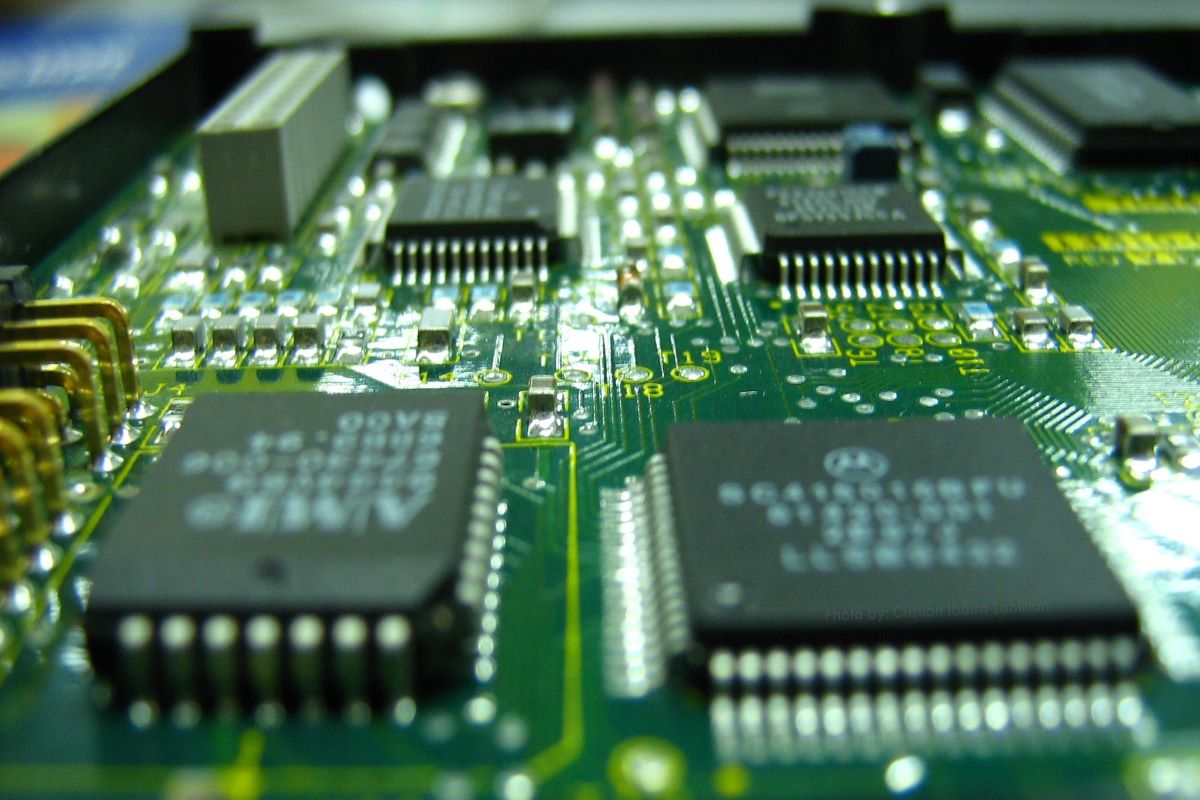The semiconductor supply chain is seeing rising strategic importance due to soaring demand, high concentration of supply and growing geopolitical concerns. Foundries as well as major economies are racing to capture the growing semiconductor market, and South Korea’s Samsung Electronics has taken a lead by starting mass manufacturing of high-end chips made using the 3-nanometer process.
Such advanced chips with a small form factor are difficult to manufacture as they squeeze in more transistors onto the same space. Mass manufacturing of such advanced chips indicated the sophistication of the manufacturer’s technology, and Samsung has taken a clear lead in Asia.
Asia’s high-end chip manufacturers
Samsung’s new advanced chips allow a 16% decrease in surface area, 23% higher performance and 45% lower power consumption compared to the incumbent 5-nm chips. “Samsung is starting the first application of the nanosheet transistor with semiconductor chips for high performance, low power computing application and plans to expand to mobile processors,” the company said in a statement.
The South Korean giant was competing with Taiwan’s TSMC to develop the cutting-edge chips, but market experts believe this will have little impact in the short term. “While 3-nm will be the most available leading-edge technology, in our estimates, the total capacity would account for less than 10% of the global foundry industry in leading-edge nodes (16-nanometer and below) in 2023, not a significant factor yet for industrywide demand/supply outlook,” Dale Gai, an analyst at Counterpoint Research, told Nikkei Asia.
While production has started, Samsung Electronics has not clarified who will be buying these 3-nm chips. Rumours on the internet say Samsung is mass producing these cutting-edge chips for a bitcoin mining rig manufacturer, but no official information is available.
Meanwhile, TSMC is still in the process of introducing its 3-nm chips. Recent reports indicate that the foundry will launch the high-end chips in the second half of 2022, with the first chips entering production during the first quarter of 2023. Last year, Apple and Intel said they will adopt TSMC 3-nm production technology for their designs.
Apple is TSMCs biggest customer and plans to manufacture its upcoming M2 Pro and M3 chips using the 3-nm node. Intel is working with TSMC on at least two 3-nm projects to design CPUs for notebooks and data centre servers. Once a market leader, Intel is yet to start manufacturing its own 5-nm chips and has lost ground to competitors AMD and Nvidia.
AMD currently uses TSMCs 5-nm chip production technology for its notebook processors, whereas Nvidia will start using the same process for its first server CPU chip.
While TSMC’s 3-nm production will likely start in 2023, the company has set a target to introduce 2-nm node in 2025. Samsung previously said it expects to start 2-nm manufacturing process in 2025.
Taiwan, South Korea, and Japan are the dominant players in Asia for semiconductor production, whereas China is slowly trying to catch up after US sanctions isolated it from accessing cutting-edge technologies.
Japan is working with the US to locally manufacture 2-nm chips from 2025. The two countries are working together to provide each other support under a bilateral chip technology partnership and private companies will pursue research on design and mass production. To spur investment, Japan’s Ministry of Economy, Trade and Industry will subsidize the cost of research and development. It is likely that US and Japanese businesses jointly establish a new company or Japanese firms set up new manufacturing hubs.
Why are high-end chips in focus?
The race to manufacture high-end chips is not merely a technological win but also carries geopolitical implications. In a world with rising technological penetration, the country that manufactures advanced chips will have an economic edge over others.
“Indeed, chips are increasingly used in a wide range of contexts today, including not only computers and smartphones, but also automobiles, medical equipment, and public infrastructures. Concerns are growing that a country’s access to cutting-edge chips could have far-reaching implications for national security,” said DBS in a research report.
Meanwhile, Morgan Stanley equates the global semiconductor race to the arms race. “Given the current hostile political climate around semiconductors, we believe that this commodity may prove to be a centrepiece of geopolitical conflict that could impact global markets and trade, similar to oil in the 1970s,” said the US-based financial services company in a note.
On the other hand, TSMC and Taiwan are in focus as the country controls around 50% of the global foundry capacity and is the biggest producer of high-end chips around the world. “Taiwan has represented a key sphere in which core Chinese and US interests collide. China considers Taiwan to be an issue of territorial integrity, while the US regards it as a critical island within its “defensive perimeter” in the Pacific,” says Morgan Stanley.










 Australia
Australia China
China India
India Indonesia
Indonesia Japan
Japan Malaysia
Malaysia Philippines
Philippines Singapore
Singapore South Korea
South Korea Taiwan
Taiwan Thailand
Thailand Vietnam
Vietnam Germany
Germany Hong Kong
Hong Kong USA
USA Switzerland
Switzerland Singapore
Singapore
 United Kingdom
United Kingdom







